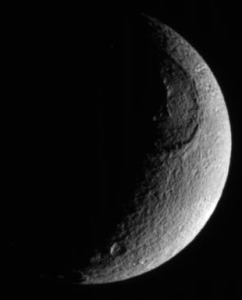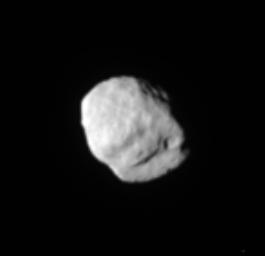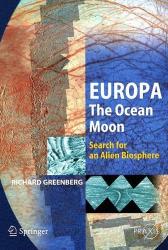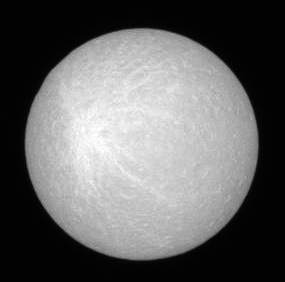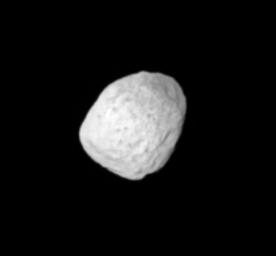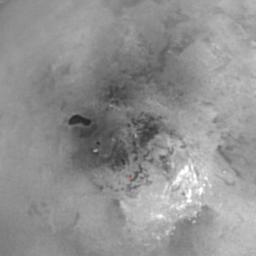
CICLOPS has released
this view of Titan's south pole along with a
movie showing cloud movement, both data taken during Cassini's non-targeted encounter on June 6, 2005. This is Cassini second look at the south polar region, the first coming nearly a year ago, shortly after SOI. At the time,
Casssini cameras saw the south pole of Titan shrouded in a field of clouds. Clouds continue to appear in the south polar region for several months following that distant encounter, until the disappeared almost entirely in December, both from
Cassini images as well as
ground-based observations. As you can see in the movie, clouds have returned to the south polar region, but luckily for mappers (...like myself), the clouds are not exactly over the south pole (noted by the red cross in the still image). The clouds move around the pole, though some small, isolated clouds, don't appear to move at all but do appear to change shape or dissipate (in some cases).
Perhaps the most exciting surface feature seen in this view is the dark, roughly peanut-shaped feature in the upper left in the movie and left of center in the still. This feature is much darker than many of the other features in the scene. In addition, the smooth morphology of the margin suggests that it has been modified by erosive processes, rather than tectonic forces like the western margin of Xanadu. It is thought that this feature might be a reservoir (a "lake" if you will) for rain run-off from the many clouds that have been seen in the region. Some clouds, like those seen
south of the main cloud field in July 2004, have appeared very close to this feature. Cassini imaging scientists feel this is the strongest candidate for a body of liquid on the surface of Titan they have seen thus far. However, no confirmation of that interpretation has been obtained. One such confirmation is to look for the specular point, but it was too far south and west at the time of this month's observations for it to show specular reflection. This leaves open the possibility that this feature is not a lake. It is possible that this is just a depression filled with dark sediment, like nearly all the other dark regions seen on Titan thus far. It is also possible that this is some kind of sinkhole or even an Io-style cryovolcanic caldera. Cassini scientists will continue to search for opportunities to view this feature at higher resolution. As summer drags on, and the sun marches north in Titan's sky, the window for viewing this feature through the ISS and VIMS instruments is rapidly closing (this feature is near 75 deg. South latitude). RADAR might be another possibility and opportunities to view this feature through RADAR SAR or the south polar region in general will be examined very closely in the coming months and years.
UPDATE: 06/28 10:49am: Carolyn Porco, the Cassini Imaging Team leader, has updated her Captain's Log posting she has on the
CICLOPS homepage, mostly with reflections on the last year in orbit and on this recent discovery.
UPDATE: 06/28 3:31pm: Here are a few links from media organizations reporting on the lake:
Possible lake on Saturn's moon Titan [CNN/Reuters]
Cassini Probe Spies Lake-Like Feature on Titan [Space.com]
Candidate Lake on Titan? [Planetary Society]
